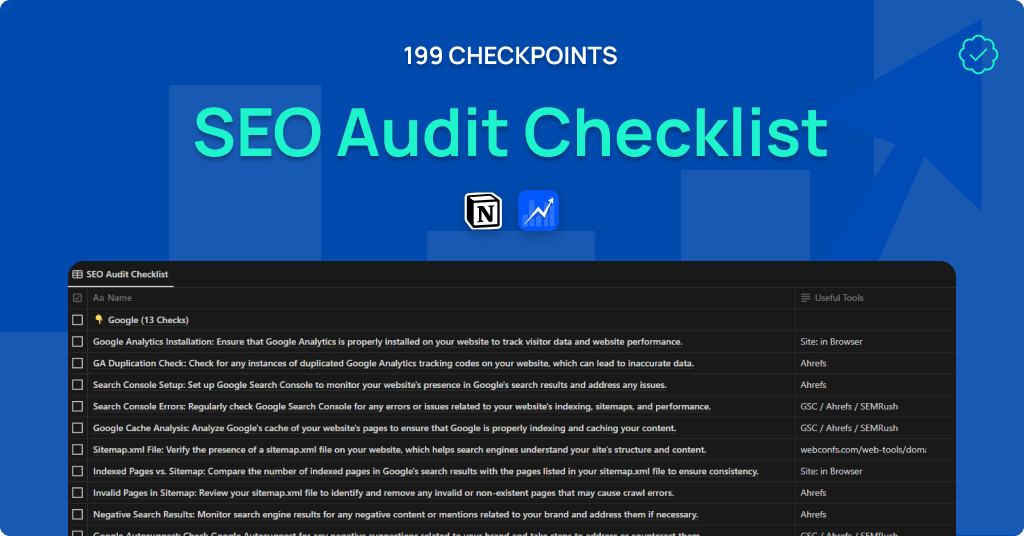Are you on a quest to elevate your website’s search engine ranking? Look no further! Dot Mirror is excited to introduce our comprehensive SEO Audit Checklist, featuring 199 straightforward steps. This checklist is an essential tool for anyone eager to enhance their website’s performance in search engines.
What Does Our SEO Audit Checklist Include?
Our checklist is thorough, covering every angle you need to assess on your website. Here’s a brief overview:
- Google (13 steps): Fundamental rules to align your site with Google’s standards.
- Benchmarks (6 steps): Evaluate your website’s current performance.
- Competition Analysis (5 steps): Gain insights from your competitors’ strategies.
- Site Architecture (23 steps): Examine the structural elements of your site.
- Technical SEO (32 steps): Delve into the technical aspects that impact your SEO.
- Image Optimization (7 steps): Optimize your images for better SEO.
- Mobile Audit (15 steps): Assess your website’s mobile compatibility.
- Page Level & Element Analysis (27 steps): Scrutinize each page and its components.
- Keyword Analysis (10 steps): Ensure optimal use of keywords.
- Content Audit (16 steps): Review the quality and relevance of your content.
- User Experience (UX) (8 steps): Enhance the usability of your site.
- Backlinks & Analysis (8 steps): Examine the backlinks pointing to your site.
- Internationalization (9 steps): If applicable, check your site’s global appeal.
- Local SEO Audit (9 steps): Tailor your SEO for local search dominance.
- Negative Practice Check (9 steps): Identify and avoid SEO pitfalls.
Why Choose Our SEO Audit Checklist?
- Simple and Clear: Our steps are easy to understand and implement, making them accessible to everyone.
- Actionable Tips: Each point in the checklist provides a specific, actionable task, allowing for immediate improvements.
- Versatile for Every Website: Whether you’re managing a small online shop or a large corporate site, our checklist is relevant and beneficial.
The Importance of a Comprehensive SEO Audit
In today’s digital landscape, a well-executed SEO audit is crucial for identifying areas of improvement and opportunities for growth. Our checklist is not just a set of tasks; it’s a roadmap to achieving higher visibility, better user engagement, and increased traffic.
Ready to Transform Your Website’s SEO?
With Dot Mirror’s 199-Step SEO Audit Checklist, you’re not just getting a guide; you’re unlocking the potential to significantly improve your website’s ranking in search engines. Whether you’re fine-tuning an established site or optimizing a new one, our checklist is your companion in achieving SEO success.


